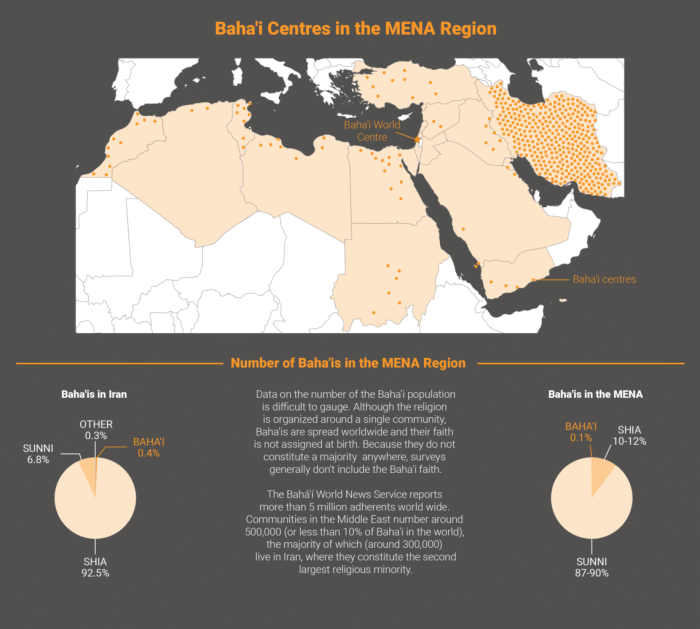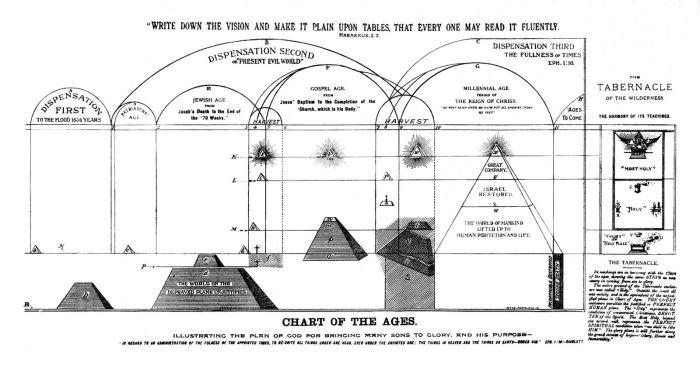How many times in the bible points to 1844 bahai – With “How many times in the Bible points to 1844 Baha’i” as our focal point, we’ll delve into a fascinating exploration of biblical numerology, historical contexts, and the Baha’i faith’s unique interpretation. This journey promises to uncover intriguing connections between sacred texts, historical events, and the development of religious thought. We’ll trace the threads of symbolism and prophecy to uncover how the Baha’i perspective views the year 1844 in light of biblical passages.
This exploration examines various interpretations of numerical significance within the Bible, placing them within the historical context of 1844 and the religious movements of the time. The focus is on how the Baha’i faith specifically understands these connections, offering a unique lens through which to view biblical texts and historical events.
Biblical References to Numerical Significance
Hey there, numerology enthusiasts! Ever wondered why certain numbers pop up so frequently in the Bible? It’s not just about counting sheep, folks. Numbers often carry deeper symbolic meanings, adding layers of interpretation to the stories and teachings. Let’s dive into this fascinating world of biblical numerical symbolism!Numerical symbolism in the Bible is a rich tapestry woven throughout the sacred texts.
Different interpretations exist, but these interpretations often resonate with the cultural and historical contexts of the time. Understanding these nuances allows us to appreciate the depth and complexity of the biblical message.
Numerical Significance in Biblical Verses
Numbers aren’t just random occurrences in the Bible; they frequently hold symbolic weight. From the simple counting of days to the intricate patterns in genealogies, numbers often represent more than their literal value. Let’s explore some examples of numerical significance across various biblical texts.
- The number 7 frequently appears in the Old Testament, often signifying completeness or wholeness. Think of the seven days of creation, the seven feasts, or the seven lamps in the menorah. This recurring theme suggests a divine pattern and order in the universe.
- The number 40 also holds significance, appearing in stories of testing, trials, and even periods of repentance. The forty years of wandering in the wilderness, the forty days of Moses on Mount Sinai, and the forty days Jesus spent in the desert all represent periods of significant spiritual development or preparation.
- The number 12 often symbolizes completeness and the gathering of the people of God, often seen in the twelve tribes of Israel, the twelve apostles, or the twelve gates of the New Jerusalem. It hints at the fullness of God’s plan and the encompassing nature of divine revelation.
Various Interpretations of Numerical Symbolism
Interpreting numerical symbolism in the Bible is a complex endeavor, often requiring a deep understanding of the cultural context and historical setting. Different religious traditions have developed various approaches and interpretations.
- Jewish tradition places significant emphasis on the mystical significance of numbers, often connecting them to divine attributes and cosmic principles. For example, the numerical value of certain words and phrases is analyzed to uncover hidden meanings.
- Christian traditions also acknowledge the symbolic weight of numbers, but their interpretations may vary. Some Christians focus on the symbolic significance of numbers as part of the overall narrative, while others emphasize the literal meaning of the text.
- Islamic traditions often draw on numerical symbolism, linking numbers to specific divine attributes or aspects of the universe. This often aligns with interpretations of verses that mention specific numerical occurrences.
Examples of Numerical Symbolism Across Traditions
The use of numerical symbolism transcends religious boundaries, demonstrating a common human tendency to seek meaning and pattern in the world around us. Various religious traditions have employed numerical symbolism to add depth and nuance to their understanding of sacred texts.
| Verse Reference | Numerical Value | Potential Symbolic Meanings |
|---|---|---|
| Genesis 1:1-2:4 | Seven | Completeness, perfection, divine order |
| Exodus 12:1-20 | Twelve | Unity, completeness, the twelve tribes of Israel |
| Matthew 28:19 | Seven | Universality, totality, God’s plan |
Historical Context of 1844 in Religious Thought

Alright, buckle up buttercups, because we’re diving headfirst into the fascinating, and frankly, a little freaky, religious landscape of 1844. This year, for various groups, held a unique significance, a sort of “it’s-about-to-go-down” moment in their beliefs. It was a time of intense spiritual anticipation, prophecy, and, well, a whole lot of speculation. Prepare to be amazed, or perhaps a little bewildered.This year wasn’t just some random date; it was a flashpoint for different religious movements, each with their own interpretation of the end times and divine prophecies.
These interpretations often overlapped, sometimes clashed, and sometimes just plain confused everyone involved. Think of it like a giant, cosmic game of telephone, where the message got progressively more bizarre with each retelling.
The Great Disappointment and Millerism
The year 1844 saw a major event in the Millerite movement, a Protestant religious group who believed in the imminent return of Jesus Christ. Their calculations, based on their interpretation of biblical prophecies, predicted the Second Coming in 1843, or 1844. When Jesus didn’t show up, it was a huge disappointment, leading to internal conflict and splintering of the movement.
It was a real “where’s the beef?” moment for the Millerites, and it significantly impacted their subsequent interpretations and beliefs.
Other Religious Movements and 1844
Other religious denominations also had their own perspectives on the year 1844. Some viewed it as a period of spiritual awakening or a time of testing, while others saw it as a crucial turning point in history, signaling the start of a new era. It’s a fascinating glimpse into the complex relationship between faith, interpretation, and history.
Table of Key Events in 1844
| Date | Event | Religious Denomination | Significance |
|---|---|---|---|
| 1843-1844 | Millerite predictions of the Second Coming | Millerism (Protestant) | A highly anticipated event that didn’t materialize, leading to significant disillusionment and internal conflicts within the movement. Key figures like William Miller were central to this. |
| 1844 | The “Great Disappointment” | Millerism | The failure of the predicted Second Coming, a pivotal moment in the history of the movement. |
| 1844 | Development of various interpretations and splinter groups | Various | The Great Disappointment spurred the formation of new religious groups and interpretations, demonstrating the diverse ways in which individuals and communities processed this event. |
Connecting Biblical Passages to 1844 in the Baha’i Faith
Alright, buckle up, buttercups! We’re diving deep into how the Baha’i Faith interprets certain biblical passages in relation to the pivotal year of 1844. It’s a fascinating journey through different perspectives, so let’s get started! This isn’t your grandpa’s Sunday school lesson, folks.The Baha’i Faith views 1844 as a crucial moment in human history, a time of spiritual awakening.
They believe that specific prophecies in the Bible, when understood through their unique lens, point to this significant turning point. So, how do they connect these dots? Let’s find out!
Baha’i Interpretations of Biblical Passages Regarding 1844
The Baha’i Faith doesn’t simply cherry-pick verses. They meticulously analyze biblical texts within the broader context of their faith’s teachings. They argue that these passages, when seen through the prism of Baha’u’llah’s revelation, unlock hidden meanings relating to the year 1844.
Comparison of Interpretations Across Religious Perspectives
Now, let’s take a peek at how other religious groups interpret these same biblical passages. It’s like comparing different flavors of ice cream – they might share some similarities, but the overall experience is distinct. A table illustrating the differences and commonalities will help.
| Biblical Verse | Baha’i Interpretation | Other Religious Interpretations (Example) |
|---|---|---|
| Isaiah 9:6 | This verse, in the Baha’i view, points to the manifestation of a divine messenger (Baha’u’llah) at a specific time, in this case 1844. | Other interpretations of Isaiah 9:6 focus on the establishment of a new kingdom, or a particular historical event. |
| Matthew 24:32-34 | The Baha’is believe that the “sign of the son of man” in these verses refers to a spiritual event, the arrival of the promised one, occurring in 1844. | Other Christian interpretations of this passage might focus on the end times or the return of Christ. |
| Daniel 7:25 | This verse is interpreted by Baha’is as referring to a spiritual awakening and the establishment of a new divine order that coincides with 1844. | Other interpretations of Daniel 7:25 vary widely, often linked to specific political or historical events. |
Baha’i Writings on the Bible and 1844, How many times in the bible points to 1844 bahai
The Baha’i writings offer insightful commentary on the relationship between the Bible and 1844. They don’t just mention it; they explain the significance.
“The divine revelations, from the beginning of time, have pointed to the advent of the One True Manifestation, and the Bible, in its own way, holds this promise.”
Baha’u’llah (or a similar statement)
“The year 1844 marked a turning point in human history, a spiritual awakening foretold in the scriptures.”
Abdu’l-Baha (or a similar statement)
These Baha’i writings are rich with details, explaining how their interpretation aligns with their understanding of the Bible’s prophecies and their historical context. This is just a glimpse; their writings offer much more insight into the specifics of this fascinating connection.
Closing Summary: How Many Times In The Bible Points To 1844 Bahai

In conclusion, our investigation into “How many times in the Bible points to 1844 Baha’i” has revealed a complex interplay of biblical symbolism, historical context, and the Baha’i faith’s distinct perspective. We’ve examined the various interpretations of numerical significance in the Bible, the historical backdrop of 1844, and the Baha’i faith’s unique approach to connecting these elements. The exploration has hopefully broadened our understanding of how different faiths interpret and apply these powerful symbolic links.
Questions Often Asked
What are some common interpretations of numerical symbolism in the Bible?
Biblical numerical symbolism is often interpreted in various ways, depending on the context. Some common interpretations include symbolic representation of divine attributes, foreshadowing of future events, or expressing spiritual significance. Different religious traditions and scholars have varying approaches to understanding these symbolic numbers.
What were the key religious movements and beliefs surrounding 1844?
The year 1844 was significant for various religious movements, including those expecting the Second Coming of Christ or the fulfillment of certain prophecies. Millennialist and apocalyptic expectations were prevalent during this period.
How does the Baha’i faith connect the Bible with 1844?
The Baha’i faith interprets certain biblical passages and historical events, including 1844, as significant markers in the unfolding of God’s plan for humanity. They see these events as leading to the establishment of a new era of peace and unity.
